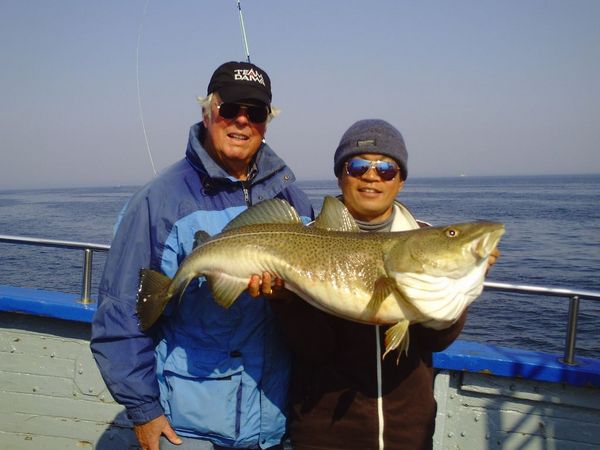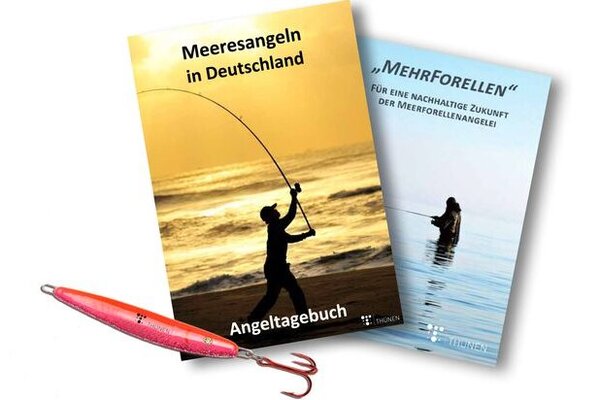Expertise
Development of the German data collection since 2003
Harry Strehlow | 02.06.2022
Recreational fisheries sampling in Europe started with the introduction of the Commission Regulation (EC) No 1639/2001), requiring Member States to sample Bluefin tuna catches in all areas and Salmon in marine waters of the North and Baltic Sea. With the amendment of this regulation through Commission Regulation (EC) No 1581/2004), the recreational species list in Appendix XI was expanded to also contain cod (Gadus morhua) in Areas III, IV, V, VI and VII (given that cod was the subject of recovery plans in these areas). Member States were required to conduct pilot surveys to establish the basis for future requirements.
The German pilot study “The German recreational fisheries’ cod catch in the Baltic and North Seas, 2004-2006” revealed that significant recreational fishery catches were only relevant for cod in the Baltic Sea. A survey with recreational fishers using commercial fishing gear such as gill and fyke nets, revealed that they caught only small amounts of cod and are insignificant when compared to the total amount of recreational fish catches.
According to the findings from these pilot studies, recreational fishery sampling was continued and expanded to other species (EC) No 949/2008). Since 2003 the Thünen Institute of Baltic Sea Fisheries (TI-OF) is collecting recreational fishery data in German marine waters of the North and Baltic Sea. This includes effort and catch per unit effort (e.g., catch per fishing day) to estimate the total catch for selected species. The recreational catch-sampling scheme is continuously being improved and developed.
Survey methods
To estimate the magnitude of recreational fishing we need to assess how many anglers go fishing at the coast, how many days they go fishing (effort) and which species and how many they catch per fishing day (catch per unit effort). With the help of this data we extrapolate the total catch for selected species. Yet the practical implementation causes problems then alone the estimation of numbers of anglers is difficult.
In general, recreational fishers in Germany require a fishing license to go fishing. After passing an exam this license is valid for a lifetime but needs to be reactivated by paying an annual fee. However, in the coastal state of Schleswig-Holstein it is not possible to estimate numbers of anglers fishing in the Baltic Sea from the number of sold licenses. Furthermore, personal contact data from fishing license holders is not available for scientific purposes due to confidentiality protection requirements. Therefore, systematic surveys are difficult to implement.
In addition, recreational fishing not only takes place from charter/tour and private boats departing from harbors but also from inflatables, which are often used in remote and hard to access areas. Similarly, anglers practicing surf fishing and/or wading are spread diffusely along the coast. To obtain reliable information and identify marine recreational fishers in the general public, methods such as representative telephone surveys using a random sample of generated telephone numbers are used.
This is how we obtain the data:
The estimation of marine recreational fishers in the North and Baltic Sea is central to our data collection activities. This investigation enables us to estimate the biomass removals by extrapolating to the total numbers of German fishers and the total effort (fishing days). To establish a representative panel we recruit participants via mail/telephone surveys and ask them to keep a fishing diary for one year.
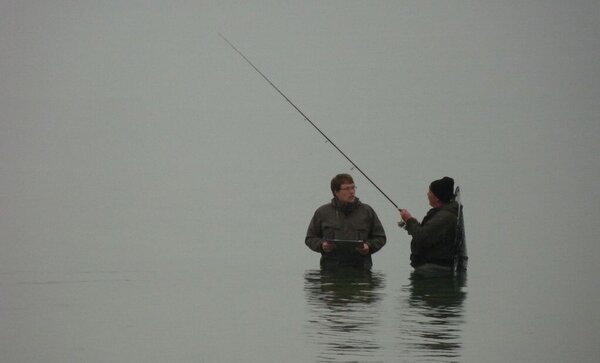
To estimate catch per unit of effort (CPUE) fishers are interviewed about their catches. For this purpose we conduct year-round on-site surveys from randomly selected access points (harbors and beaches) and dates along the German Baltic coast. Stratification of fishing methods is as such:
- Beach fishing (surf angling and wading)
- Boat fishing (boat angling and trolling)
- Tour boat fishing
We sample year round to understand seasonal and spatial variation. Crucial for the successful implementation of our on-site catch sampling along the German Baltic coast are local survey agents who are familiar with the local and regional conditions.
The systematic assessment of recreational fish-length distribution (particularly for cod) occurs through sampling on tour boats. For each month and survey area, three tour boats are randomly selected and contacted by the survey agent to book a trip. Inspection dates are chosen by the survey agents. During on-board sampling, every fish (harvested and released) is measured to the lowest centimeter. In addition to length measurements by survey agents on board of tour boats, we ask individual anglers to measure their catches within diary-surveys.
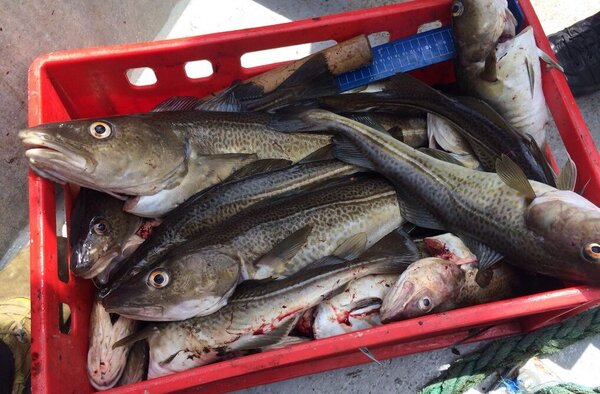
The systematic assessment of recreational fish-length distribution (particularly for cod) occurs through sampling on tour boats. For each month and survey area, three tour boats are randomly selected and contacted by the survey agent to book a trip. Inspection dates are chosen by the survey agents. During on-board sampling, every fish (harvested and released) is measured to the lowest centimeter. In addition to length measurements by survey agents on board of tour boats, we ask individual anglers to measure their catches within diary-surveys.
Since for some species, e.g., sea trout, no length-weight or age data is available from commercial catch sampling, we collect this data for the first time in marine recreational fishery surveys. We remove 10-15 scales for age reading. To assess the population structure and origin of captured fish, we collect tissue samples for genetic analysis. Individual anglers help us to conduct this work. They measure lengths, take scale samples and collect tissue samples.
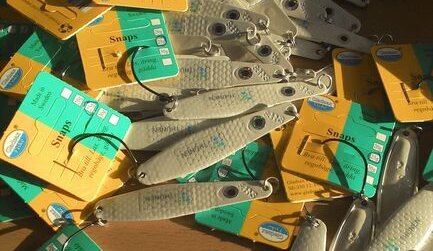
In order to understand the importance and development potential of the marine recreational sector, we collect information on the economic value and social benefits of marine recreational fishing. During on-site and diary surveys we ask anglers about their expenditures.

